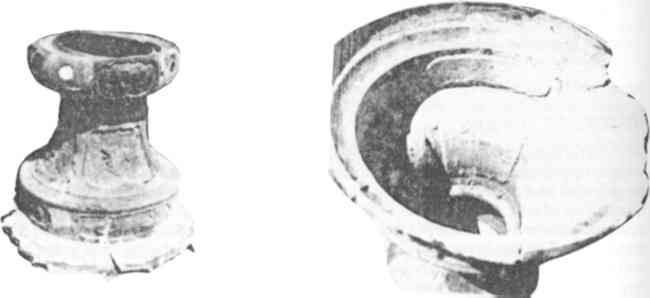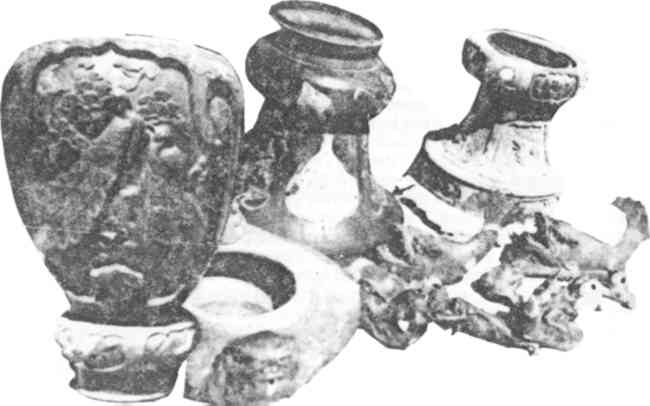RESTORATION OF A LARGE CHINESE BRONZE URNAron A. Apisdorf
2 CONDITION OF URN AS RECEIVED BY RESTORERThe high humidity of the Venezuelan climate and the water pouring over the urn from the fountain had caused heavy deposits of calcium to be left on the lower part of the base, and the whole urn had suffered loss of patina. Also due to the humidity, the water, the presence of the iron reinforcing bars, and the lime in the concrete base, a reaction had taken place over the years which had caused the bronze to deteriorate. The surface and some whole sections of the metal had become a greenish-white granular substance, which looked like hair growing on the bronze and which crumbled upon being touched. The deterioration of the bronze in the areas touching the iron bars was so extensive that the bronze in these areas was completely eroded away. In addition, there were four large vertical fissures and several small fissures in the areas above and adjacent to the eroded areas (Fig. 1). The separations at the bottom of the largest fissures were approximately one inch wide. The upper part of Level I had a crack twelve inches long in its upper surface, and that upper surface was severely depressed because of structural weakness caused by the deterioration of the bronze. Level I could not support the heavy upper levels.
In addition to the damage sustained over the years, the urn was subjected to grievous damage by the shipper. In the process of removing the base of the urn from the concrete, whole sections were completely torn off the bottom rim of the base
|

